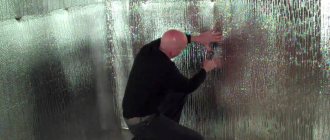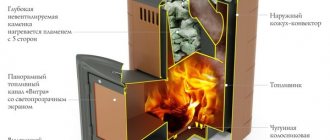A bath hat is one of the most important attributes necessary for health procedures. The main function of the headwear is to reliably protect the head from thermal effects.
In some cases, the head is covered with a towel or scarf, but experienced bath attendants always prefer a special hat. The product can be purchased ready-made, sewn or felted with your own hands.
Functions
The hat is strongly associated with the function of protection from the cold. It doesn't seem logical to wear it in a hot place. Ancestors did not use any hats in the bathhouse. In extreme cases, you can cover your hair with a towel. These are just some of the arguments that clients give in an attempt to abandon the attribute.
However, the hat is not a decorative item at all. It is designed to protect a person from aggressive thermal effects. Let's take a closer look.
Bath caps can be compared to oriental turbans and turbans.
Turban
Turban
The average human body temperature is 36-37C. In hot climates, the temperature outside is at least 40-45C above zero. Overheating of the body with such a difference is literally inevitable. The main blow will fall on the head, because it is responsible for thermoregulation much more than other organs. Thus, the fabric does not insulate, but, on the contrary, cools.
In saunas and baths the situation is approximately the same. Only the temperature of the external environment rises to 70-120C. The situation is aggravated by the ability of heated air to rise. It gets even hotter at head level. An ordinary scarf or towel can no longer cope with such indicators.
Neglecting a hat in the steam room has the following consequences::
- pressure rise;
- heart rhythm disturbance;
- fainting;
- dizziness;
- nausea and vomiting;
- general malaise, weakness in the limbs.
In addition, hot air significantly dries out hair. The bulbs are destroyed from overheating, burns form on the delicate skin, the length begins to break, lose shine, and fall out in clumps.
The purpose of a hat in a bathhouse is to protect the head from overheating, and we are also talking about protecting the hair. Exposing hair to high temperatures damages the outer layer, making it less smooth.
Special hats are made from dense materials, following the example of a “thermos”. Optimal body temperature is maintained inside; heat is not absorbed from the outside.
An additional bonus: the headdress absorbs sweat from the forehead, preventing it from flowing onto the face.
Requirements for headgear
It is difficult to imagine carrying out steaming or bathing procedures without a bath cap. But before you make a future purchase, you need to study the basic requirements for a headdress:
- Protection. It reliably protects the head from overheating and burns, prevents hair from becoming brittle and the development of pathogenic bacteria on the skin.
- Safety. The product helps preserve human health through the use of natural materials for its sewing.
- Convenience and practicality. A high-quality product reliably retains its shape, does not change color or volume after washing, and dries quickly. It should also provide comfort and ease of use and fully correspond to the circumference of the head.
- Attractive appearance. The headdress can have a classic or original design, but in any case it should provide aesthetic pleasure when worn.
When choosing a bath cap, it is recommended to take into account the shape, size and material from which it is made.
The right hat, what is it?
The basic requirements for the attribute are as follows:
- Environmental friendliness
. Synthetic materials do not hold temperature well, decompose and release harmful elements into the air when heated. Natural materials keep you healthy in every sense. - Convenience
. The item should cover the entire head, keep its shape, not lose volume and dry quickly after washing. - Style.
Modern realities are such that people are bored with wearing unremarkable hats. Most would be more willing to wear a headdress of an unusual design, color and with a humorous inscription. People forget to take such hats to the steam room much less often.
Let's go through each point in more detail.
Size
It is better to try on a bath cap when purchasing. It should easily cover the entire back of the head and ears. It is in this part of the head that evaporation occurs the most. The leading edge protrudes forward above the eyes, which protects them from steam. The hair goes completely under the dome of the object and does not come out.
Without trying on, it is recommended to focus on the head circumference in centimeters. The size is needed with a small margin (1-2 cm). It is the air gap that works like a thermos.
The bath cap should cover the back of the head and ears.
The size is affected by proper processing of the hat after use. Washing is done in hot water, after which the product is stretched onto a three-liter jar until completely dry. The dry item is placed in a ventilated place.
- Select only the “Wool” mode. Other machine functions may cause deformation of the product.
- Use delicate soap, shampoo or gentle washing gel. Granular detergents with aggressive components should not be used.
- For hand washing, thoroughly stir the detergent into the water.
- Remove the spin. A small felt hat can be easily squeezed out by hand. At the same time, you cannot twist it, just press it with your palms and spread it on absorbent material.
- Do not soak wool for a long time.
- Dry naturally. To keep the hat in shape, put it on your head, then take it off and leave it on a flat horizontal surface. The drying rack and clothespins will leave unsightly creases.
Form
Hats are produced in the form of standard bells and domes, in the form of kokoshniks, caps, helmets of tankers, Vikings and knights, army hats, cocked hats, pirate and cowboy hats, with hand and machine embroidery, and printed designs. There are literally no limits to imagination.
When choosing a design, do not forget about size. Creative shapes do not suit all hairstyles and head sizes.
There are special universal models for children.
Material
The best fabric options are fibrous ones of plant and animal origin. They perfectly absorb excess moisture, do not allow outside heat to pass through, do not slip or melt.
High-quality specimens are made from:
- Felt
. Felted hats made of threads about 4 mm thick. Produced without the use of looms, by hand. The wool of sheep, mountain goat, and rabbit is ideal. May cause tingling due to rough texture;
- Felt
. Essentially the same felt, but finer made, since pressing is used by machine. The structure is more delicate and pleasant to the touch. Most often the base is merino wool;
- Linen
. When heated, the phenols in the fibers kill fungi and harmful microorganisms on the skin. Well protects hair from breakage;
- Cotton
. Allows moisture to circulate for evaporation and absorption in an optimal volume. Does not cause allergies. It does not prick, which is important for people with sensitive skin. They hold their shape well and are easy to care for.
The leaders in all respects are felt and felt. Cotton and linen will not withstand heating up to 120C with high humidity; they are more suitable for moderate dry heat.
Synthetic hats or scarves are by no means suitable, as they not only do not protect the head from high temperatures, but can also cause harm.
Painted options can be toxic; you should pay attention to the durability and type of paint used.
DIY bath hat
Hats are considered elementary products; in addition, perfect appearance is not so important for them. There is no need to go to the store and buy hats when you can easily make them yourself. Moreover, decorating hats is an interesting and exciting activity where you can fully demonstrate your imagination and sense of humor.
DIY bath hat: patterns, sewing instructions
The easiest way to make a hat is to sew it. This work is quite simple, so even those who do not have much experience can handle it. You can make a hat in just an hour.
Simple bath cap made of 4 wedges
To work you will need:
- textile;
- needle and thread or sewing machine;
- scissors;
- tape measure;
- paper and pencil.
First you need a bath hat pattern. For it, you need to measure the circumference of the head, divide the resulting figure by 4 and add 1 cm. The result will be the width of one wedge, there will be four of them in total.
Next, you need to draw an isosceles triangle on a sheet of paper with a base equal to the width of the wedge. The height of the hat may vary, depending on your preferences and wishes. Then you need to slightly change the shape of the triangle, rounding its corners.
Next, you need to cut out the pattern, attach it to the fabric and prepare four identical parts.
The last step is to sew the elements together to make a hat. The seams can be different, you can hide them on the back side or leave them on the front side. If you are making a hat from thin material, then it is better to seal the seams by folding them in half; you can quickly sew the hat on a machine.
If you choose thick felt or felt, then it is better to do everything by hand, as the machine can damage the materials. It is quite difficult to pierce felt and felt with a needle; it is better to use an awl. It is recommended to use strong wool threads for sewing.
It is recommended to make a loop on the top of the hat so that after bathing procedures you can hang it on a hanger to dry.
To decorate the hat, you can sew a braid around the edge, an applique, etc. A good choice would be various inscriptions on bath caps ; you can embroider them yourself or buy ready-made parts.
FAQ
The felt hat began to shrink. Poor quality or improper care?
Natural wool hats shrink really quickly when exposed to high humidity. This is a normal course of events. It is important to take proper care: dry thoroughly after use, do not wash in a spinning machine. Every 2-3 trips to the steam room you need to stretch the product: first with your hands in different directions, then on a jar or rolling it with a special roller for felted products. It is extremely important to return the garment to its original shape while it is still wet.
When to wash your hair: before putting on a hat or after taking it off?
It is highly undesirable to wash your hair before entering a sauna or bathhouse. Water will create excess evaporation and worsen thermoregulation. It is better to carry out the procedure after the final entry into the steam room.
Is it possible to wear a wet hat? Do I need to moisten it?
Under no circumstances should you use a wet hat in the steam room. Not only will it not protect the body from overheating, but it can also significantly increase it.
What temperature is needed for washing?
For felted products, hand washing at 30C is ideal. Wool does not tolerate spinning, so the hat is wrapped in a towel and blotted with your hands. When excess water has come out, transfer it to a second towel or jar, stretch it and leave it until completely dry. Cotton and linen can easily tolerate 40C and light spinning. Suitable products include liquid washing powders with a minimum of fragrances and dyes, baby soap or laundry soap. After regular powder, an unpleasant odor often occurs.
I have a non-standard head size. What to do?
If store-bought options are not suitable in volume or do not accommodate the entire hair, you can order a hat from needlewomen, in a felt or weaving workshop, or sew it yourself from sheets of felt/felt according to patterns from the Internet to suit every taste.
There was rubbing on the forehead. Could this be from the hat?
Yes maybe. This happens if the size is small or the fabric is too rough for a particular skin. It is worth buying a softer, gentler to the touch option and experimenting with a larger volume.
Shape and size of bath headdress
A bath hat is a stylish accessory that differs in form and functionality. There are no special requirements for tailoring a headdress, the only condition is that it must reliably cover the scalp and eyes from hot steam. After all, it is through the back of the head that over 55% of the fluid from the human body evaporates.
A bath cap can effectively prevent overheating of the head and all the unpleasant consequences associated with it - headaches, nausea and fainting.
Form
The most popular and popular forms of bath hats:
- budenovka;
- earflaps;
- bell;
- helmet;
- helmet;
- Panama;
- cap;
- cocked hat.
Fans of non-standard solutions can purchase products made according to original designs in the shape of a cap, Russian kokoshnik, cowboy, Viking and pirate hat.
Size
Hats made from natural materials are subject to slight shrinkage, so it is especially important to choose the right hat based on your head circumference.
To prevent the sauna hat from shrinking in size, it is recommended to follow the basic rules for storing it:
- After the procedures, the product should be steamed in heated water and pulled onto a 3-liter jar.
- For ease of stretching and drying, it is recommended to use ready-made rolling sheets designed for felt products.
- The stretched cap is left on the base until the material dries completely.
- Dried clothing is stored in a clean and ventilated place.
Purpose
The physical features of air convection in the steam room of a bathhouse are such that the temperature gradation is distributed from bottom to top, and the difference in indicators can be very significant. For example, in the floor area, at the level of the ankles, it can be about 40 degrees Celsius, at the level of the belt - 65, chest - 80, and under the ceiling, in the area of the top of the head of the soaring person, all 100 -110.
Thus, the human body is simultaneously in different temperature zones or zones, and the most sensitive part of our body, the back of the head and the crown of the head, are subject to a powerful and severe temperature attack. Which exit? Reducing the temperature of the upper zone of the steam room is not an option, since this will lead to inevitable cooling of the lower zones, especially at floor level.
The old bath tradition has found a simple and effective solution - using a bath cap. Why is it needed, it seems that it’s already hot there, without unnecessary elements of equipment. In Central Asia and the Middle East, from time immemorial, the most effective means of combating heat were: hot tea, a headdress made of natural cotton, a cotton robe with a warm belt scarf. The complete set of the gentleman there.
Natural materials such as cotton and wool have excellent isothermal properties; they maintain internal temperature, standing up as an impenetrable barrier to high temperatures outside.
This is exactly the mechanism of action that bath caps have. They maintain a lower temperature around the most sensitive places of the human body, the area of the back of the head and the crown of the head, relative to the ultra-high temperatures of the upper zone of the steam room and ensure a safe and relatively comfortable stay there for quite a long time. If a bath cap is not used, then there are all the prerequisites for heat stroke with all its negative and harmful consequences.
Features of the material for sewing hats
The material for sewing is no less important than the shape, size and functionality of the hats. It is worth giving preference to natural materials that quickly absorb moisture and do not overheat the head.
The best option is animal hair, which absorbs moisture well, provides effective thermal insulation, and maintains a constant temperature on the scalp.
A high-quality bath cap can be made from the following natural and safe materials.
Felt
Dense non-woven material (thread thickness 3–4 mm), which is made exclusively by hand from sheep wool fibers by felting. The thickness of the finished material, taking into account the functional purpose, may be different.
Despite the density of the material, ready-made felted bath hats have a fairly porous structure with high air permeability. The product is voluminous and light. Thicker walls of the cap provide reliable protection from thermal effects.
Felt
This is a more advanced version of felt material. It is made from the wool of mountain goats, merino and rabbits. Felt is made by felting, but it turns out thinner and does not have a pronounced smell of wool.
Felt headwear turns out to be quite voluminous, soft and delicate to the touch.
Linen
A material of plant origin, which is used much less frequently for sewing headwear, but is no less in demand. Due to the high content of phenols in the structure of flax, finished products have a positive effect on the scalp, destroying microorganisms and fungi.
Linen hats prevent brittleness, dryness and split ends.
Cotton
A natural material that is quite environmentally friendly, hygroscopic and hypoallergenic. It promotes rapid absorption and evaporation of excess moisture from the surface of the head. This is the best herbal substitute for natural wool, which is suitable for allergy sufferers and people with hypersensitive skin.
For the bath, it is recommended to choose thick cotton hats that can hold the desired shape and provide reliable head protection.











